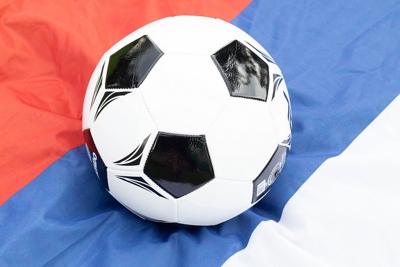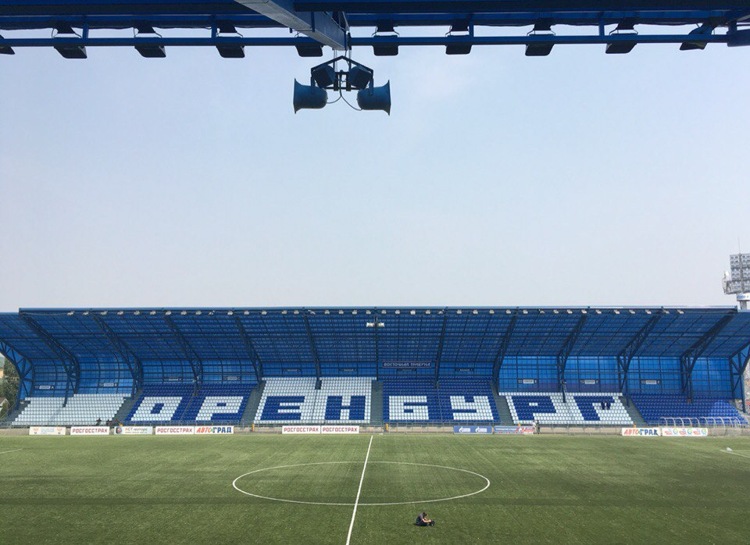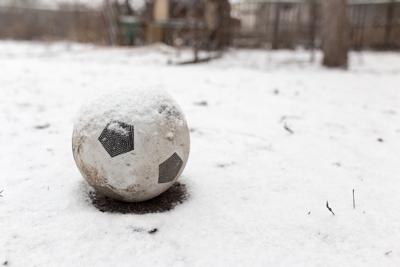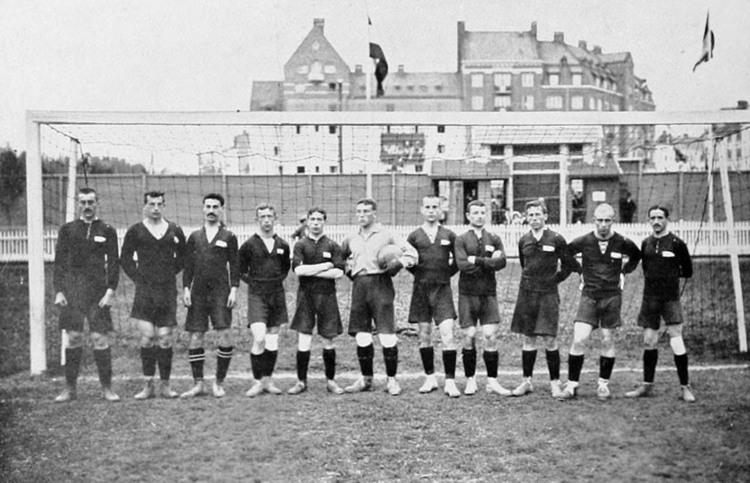Russian Premier League Stadiums & Stats

The Russian Premier League, much like its English namesake, is the top-flight league in Russia. Sixteen teams compete in the division and the administrative responsibility for it falls to the Russian Premier League itself, as opposed to the Russian Football Association. It was founded in 2001 and is also linked to the Russian Cup, a domestic trophy that Russian Premier League teams compete for.
There is a promotion and relegation relationship in place with the First Division, now rebranded as the National Football League. There are also European places available for the teams that do best in the competition, but there will be more information on that later.
In this section of the website we’ll tell you all about the sort of stadiums you’ll discover if you travel to Russia as well as some more information on the league structure and some of its history. Stop being so excited and read on…
Stadium Stats
| Stadium | Year Opened | Capacity | Ave Attendance | Record Attendance | Record Attendance Match |
|---|---|---|---|---|---|
|
Arena CSKA
PFC CSKA Moscow |
2016 | 30000 | 16766 | 26420 | CSKA v Terek (2016) |
|
Ekaterinburg Arena
FC Ural |
1957 | 35061 | 4617 | 27000 | FC Ural v FC Khimki (2011) |
|
Kaliningrad Stadium
FC Baltika Kaliningrad |
2017 | 35212 | 33062 | 33973 | Spain v Morocco (2018) |
|
Kazan Arena
FC Rubin Kazan |
2013 | 45379 | 11871 | 42951 | Rubin Kazan v Liverpool (2015) |
|
Krestovsky Stadium
Zenit St. Petersburg |
2017 | 68134 | 49708 | 64468 | Russia v Egypt (2018) |
|
Olimp-2
FC Rostov |
1930 | 15840 | 12936 | 16500 | FC Rostov v S Moscow (2009) |
|
Otkritie Arena
Spartak Moscow |
2014 | 45360 | 30077 | 44884 | Spartak v CSKA (2016) |
|
RZD Arena
Locomotiv Moscow |
2002 | 27084 | 12508 | 26109 | Lokomotiv Moscow v Zenit Saint Petersburg (05/05/2018) |
Team Stats
| Team | Year Founded | Nickname | Team Owner |
|---|---|---|---|
| CSKA Moscow | 1911 | Koni (Horses), Krasno-sinie (Red-blues), Armeitsy (Militarians) | VEB.RF |
| FC Baltika Kaliningrad | 1954 | Balda | Kaliningrad/Kaliningrad Oblast |
| FC Rostov | 1930 | Selmashi | Rostov Oblast |
| FC Ural | 1930 | Uraltsy (Ural men), Bumblebees, Orange and Black | Sverdlovsk Oblast |
| Lokomotiv Moscow | 1922 | Loko, Parovozy (Steam Locomotives) | Russian Railways |
| Rubin Kazan | 1958 | atáry (Tatars), Volzháne (People from Volga), Kamni (Stones) | Tatarstan |
| Spartak Moscow | 1922 | Narodnaya komanda (The People's Team), Krasno-Belye (The Red-Whites), Myaso (Meat) | Leonid Fedun |
| Zenit St. Petersburg | 1925 | Lvi (Lions), Sine-Belo-Golubye (The Blue-White-Sky Blues), Zenitchiki (The Anti-aircraft Gunners) | Gazprombank |
Russian Premier League Stadiums

Football is Russia’s most popular sport, but that isn’t necessarily reflected in the types of grounds used by teams in the country. Unlike in major European nations like England and Spain, there aren’t really any stand-out stadiums in the Russian Premier League. To some extent that is because of the weather, with brutally cold winters stopping many people from wanting to sit in an exposed stadium for an extended period of time.
It is perhaps no coincidence that some of the largest grounds in Russia are the newest. Both the Kazan Arena in Kazan and the Otkrytiye Arena in Moscow were built to be used as host stadiums for the 2018 FIFA World Cup when it is held in Russia. They each have capacities of around 45,000 and are the biggest in the entire Russian Premier League in terms of how many people they can accommodate.
The average capacity of a stadium in the Russian top-flight is about 20,000, with some coming in at the 30,000 mark and others being able to cope with less than 5,000 visitors.
The latter is the Gazovik Stadium in Orenburg. The amusingly named Tom Tomsk in Tomsk can welcome 10,000 people, as can the SKB-Bank Arena where Ural Sverdlovsk Oblast play their games.
The constant flux of the league and the relegation to and promotion from the National Football League means that there are sometimes larger grounds being used by teams in the top-flight and sometimes even smaller ones.
About The League

The Russian Premier League uses the same points system as most major leagues in Europe; if a team wins a match then they are awarded three points and the losers get zero. If a game is drawn then each team is awarded a point. At the end of the season all of the points are added together and the team with the most wins the league. If teams have the same number of points then they are separated according to the number of wins they’ve achieved over the season, then the goal difference. If it’s the teams at the top of the league who are tied then it comes down to the number of wins and then their head-to-head results. If they still can’t be separated then a play-off is ordered for the championship.
Each team plays each other team twice; one game comes at home and one away. Traditionally the games used to be played from March until November. This was because of Russia’s notoriously tricky weather conditions, which meant that teams generally avoided playing when it was at its coldest and most unforgiving. This was changed for the 2012-2013 season which was instead moved to being played from autumn until spring. They deal with the bad weather by having a three month break from December until the middle of March. The teams that finish second and third at the end of the season qualify for the Champions League group stage and the third placed team enters that competition at the second qualifying round. The fourth and fifth placed teams go into the Europa League and the bottom two teams are relegated.
Russian Premier League History

Football as a going concern was introduced to Russia in the latter part of the nineteenth century. As with elsewhere in Europe it was brought over by British nationals who were living and working in the country at the time. As far as what was then the Soviet Union was concerned the game was first played in St. Petersburg; English and Scottish workers played the game and set-up their own teams. Eventually, the Russians themselves cottoned on to the enjoyment of the game and started playing it themselves.
Of course that was a significantly long time ago when it comes to the Russian Premier League. The history of the competition we know nowadays really only dates back to the dissolution of the Soviet Union. From 1992 onwards the breakup of the USSR meant that each former republic of the Soviet organised their own independent championships. In Russia that means that the six Russian specific teams who had been playing in the Soviet Top League were joined by a further fourteen teams from the lower divisions to make up a twenty-team Russian Top Division.
Of course twenty teams was quite a lot for a country as large as Russia, with travel being hard work. The Top Division was, therefore, divided further into two groups of ten to reduce the amount of games being played and the distance travelled. In 1993 the total number of teams was reduced down to eighteen before becoming sixteen the following year. They tried returned to eighteen teams in 1996 and 1997 but it didn’t work, so the Russian top-flight has contained sixteen teams ever since.
It re-branded as the Russian Premier League in 2001. Perhaps unsurprisingly because of the size of the city and its importance in Russian culture, the Premier League has been dominated by teams from Moscow. Spartak Moscow are the most successful team since the division’s formation, with Lokomotiv Moscow and CSKA Moscow also winning it numerous times over the years. The top-flight has only actually been won by three teams not from Moscow. Rubin Kazan have won it twice to date, Zenit St. Petersburg have done so on six occasions and Spartak-Alania Vladikavkaz picked up a surprise title win in 1995.
